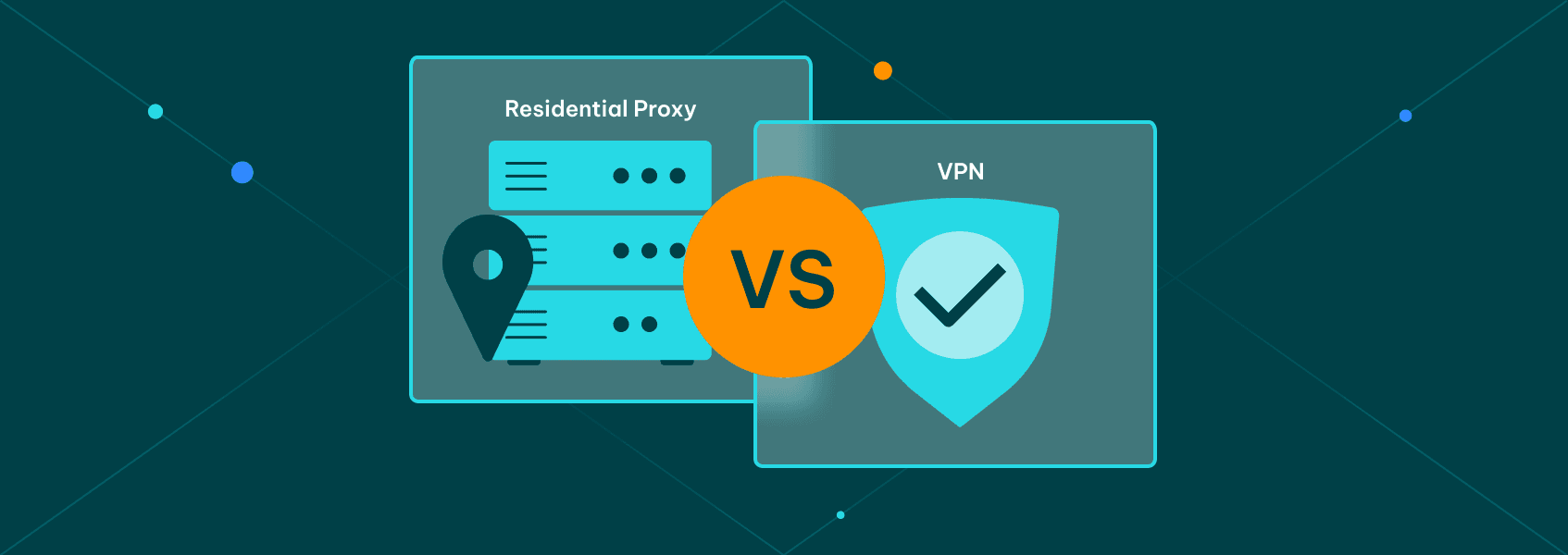Non-Transparent vs. Transparent Proxy - Key Differences
Proxy fundamentals

Simona Lamsodyte
As we already know, a proxy server acts as an intermediary between your device and the rest of the internet. It receives all requests from devices on a network and forwards them to their destination, replacing the original IP address with its own residential proxy in the process. The proxy also receives all responses and forwards them to the original device.
Most people don’t realize this, but we use transparent proxies on a daily basis, usually when accessing the internet through a public Wi-Fi network. We just don’t notice it because there’s no need to configure these proxies. Their purpose is to decide if they’ll forward our request to its destination or not. Transparent proxies also take care of our requests without changing the IP address - hence the name.
What Is a Transparent Proxy
The key thing you need to know about transparent proxies (also known as intercepting, inline, or forced proxies) is that they identify themselves to the destination server you’re trying to communicate with. A transparent proxy lets the server know it’s a proxy and your request goes through without any changes to your IP address.
Businesses, internet service providers (ISPs), educational institutions , hotels, bars, and other establishments with available internet access often use transparent proxies for the whole network because setting up each device takes way too much time. Here are the most common ways transparent proxies are used:
- User authentication
A transparent proxy acts as a gateway and has the ability to modify or block traffic based on specific rules. When you connect to a public Wi-Fi or cellular internet service, the provider forces you to accept its terms of service or log in. Once you do, you can access the internet, and they can track your activity on the network, used bandwidth, and other data.
- Activity monitoring
Aside from filtering traffic, these proxies also enable tracking the users’ activity. They can record which websites you visited and for how long, or even track attempts of accessing blocked websites.
- Content filtering
A transparent proxy offers a great way to prevent users from accessing specific websites, protocols, and ports. You can block chat apps, streaming services, torrent traffic, etc. Most businesses want to prevent their employees from wasting time on social media and similar sites. Libraries, schools, universities, and other public organizations also use transparent proxies for the same reason.
What Is a Non-Transparent Proxy
Unlike their transparent relatives, semi-transparent and non-transparent proxies (also known as anonymous and elite proxies, respectively) don’t reveal the client’s IP address to other servers.
There’s an important thing to keep in mind here, though. A semi-transparent proxy server will reveal you’re using a proxy, while an elite proxy won’t disclose this information. In other words, there’s no way to distinguish it from other “regular” traffic. Here are the most common ways non-transparent proxies are used:
- Avoiding geo-restrictions
Many websites, apps, and other online resources are only available to users in a specific region. On top of that, ISPs and governments are restricting internet access more than ever before. Individuals and businesses can circumvent these restrictions and gain access to resources by simply using a proxy server in a supported location.
- Web scraping
Reliable and accurate data scraping is essential for modern business. With a steady supply of fresh IP addresses, it’s possible to gather information from any website without worrying about IP-based limitations.
- Social media management
Companies often use multiple social media accounts to promote their brand and expand their audience. Since most platforms don’t allow using more than one account per IP address, residential proxies are crucial for smooth social network account management without worrying about blocks or bans.
Non-Transparent vs. Transparent Proxy - What’s the Difference?
The key factor to consider in the non-transparent vs. transparent proxy debate is the level of privacy they provide. A transparent proxy needs to be configured once and it’ll automatically handle network traffic on specific ports. They’re great for all environments, platforms, apps, and browsers. As for non-transparent proxies, you need to configure them for each device, application, or protocol, depending on the specific usage case.
As we mentioned earlier, a transparent proxy server won’t do anything to hide your IP address, location, or any other identifiable data. If you need a solution for this purpose, you should go with anonymous proxies (or semi-transparent proxies) and elite proxies .
The difference between these two proxy types is simple. Anonymous proxies still “tell” the destination servers that they’re a proxy. On the other hand, an elite proxy doesn’t provide this information. In other words, all online servers “see” it as regular user traffic.
Final Thoughts
Because of this difference, non-transparent proxies are commonly used for web scraping, software testing, market research, social media management , and other scenarios where you need a new IP address in a different location. If you need to access the internet while keeping your IP, location, and other personal data protected, IPRoyal offers a wide range of solutions focused on speed, reliability, and privacy!


